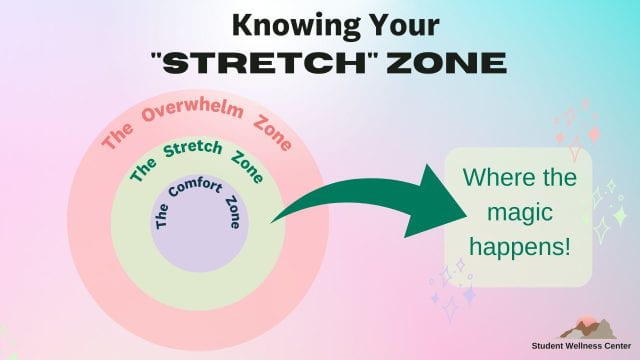CONTENT WARNING: This post contains language and ideas around race and racism. People who have been racialized may feel uneasy or even angry when engaging in this work. Please recognize and allow yourself to take a step away when needed. For those who have greater privilege, we encourage the practice of “courageous self-examination.”
Welcome back to the Student Wellness Center’s Fall of Brave Connections! In this week’s reflection, we will focus on the courage it takes to embark on the inner work of racial justice.
In the SWC Reflections post Who Are You Really? A 3-Step Process to Know Who You Are and What You Want, we encouraged those of us with greater privilege to take the necessary steps that contribute to a community where there is equity and opportunity for all – even if it’s uncomfortable at times. But what are those “necessary steps”? For those of us that want to take action but are not quite sure where to start, it’s often helpful to start with…you guessed it… ourselves (and no, this is not selfish work, but an imperative step in unraveling the deep history of racial injustices).
By taking time to identify our own relationship to inequity, race, and racism we can begin to “recognize and accept where we are and to investigate what must be changed to minimize the harm that our own views and blindspots cause others” and that this step, according to law professor, social activist, and mindfulness teacher, Rhonda McGee, is essential to the work of racial justice.
When it comes to exploring your own views (hidden and otherwise) related to race and racism, try this 4-step process* as a way to begin to examine your beliefs, conditionings, and behaviors. You may learn something about yourself you didn’t know was lying just beneath the surface. And it might be uncomfortable. That’s where bravery comes into play. If we are to actively engage with social justice, we must be willing to see our own biases and racist tendencies and aim to unlearn them. Acts of bravery are rarely the easy way, but they are often the actions, words, and thoughts that create a better world for all.
As you consider race and racism in your life, gently and boldly move through these steps:
- The first step is grounding, or pausing – allow yourself the time and space for silent contemplation; to sit in awareness. Try our 5-minute Breath Awareness meditation to ground yourself and strengthen your attention.
- The second step is seeing – with courageous self-examination, think of a time when you were interacting with someone of another race, a time when the fact of racial difference became apparent to you somehow. Ask yourself:
What were some of the thoughts running through my mind?
What notions of race do I recall being a part of this experience?
- The next step is being —recognize and acknowledge that there is race and racism in your life, in your community, and in you. It’s not just something that exists elsewhere. This part is key as it unlocks the ignorance that leads to complacency and inaction. You may notice a level of discomfort arising as some of what you will encounter doing this work will be unpleasant.
As a tool (even the most brave souls use tools!) to work with challenging feelings and thoughts, try out the evidence-based RAIN practice to help bring mindfulness and compassion to difficult emotions.
- The final step is doing – be willing to engage in discussions about race, utilizing deep listening, non-violent communication, and taking risks to speak about race and other forms of social identity bias.
Connect with the Office of Pluralism and Leadership for additional ways to advocate for social justice and/or for further education for communicating across differences, recognizing bias, and intervening in moments of harm.
*Inspired from the book The Inner Work of Racial Justice: Healing Ourselves and Transforming Our Communities Through Mindfulness by law professor and mindfulness teacher Rhonda Magee.
This is hard and challenging work, but now is the opportune time to lean into discomfort, and discover all the ways we can contribute to a world where every being is welcomed. By knowing ourselves deeper, we can let go of unintentional harmful behavior and move towards greater equity and acceptance for all.
If you are interested in exploring this topic in greater depth with your community, reach out to Laura.Beth.White@Dartmouth.edu for more information on our Waking Up to Racism In & Around Us workshop.



